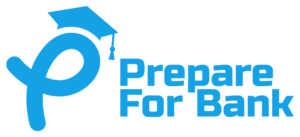Computer software types is a collection of data or instructions that tell the computer how to work. Few software’s pre-installed in the computer system. Without software most computers are useless. The software can be purchased at a retail shop or online.
Once the software is installed on the computer hard drive, the program can be used anytime by finding the program on the computer. On a Windows system, a program icon is added to the Start menu or Start screen, depending on your Windows operating system version.

The first software program was written by “TOM KILBURN” in electronic memory, which calculated the highest factor of the integer 2^18 and was successfully executed on June 21,1948, at the University of Manchester, England.
Below are types of computer software
- System software
- Application software
- Programming software
System Software
System software is required to run the hardware parts of the computer and other application software such are called system software.
System software acts as an interface between hardware and user applications. Software is required to convert all human instructions into machine understandable instructions.
Based on its function, system software are of four types
- Operating System
- Language Processor
- Device Drivers
Language Processor
As we know an important function of system software is to convert user instruction into machine understandable language. These can be found in languages such as COBOL and FORTON.
There are two main types of language processors
- Interpreter
- Translator
Interpreter – Allows a computer to interpret or understand what software program needs a computer to do or what task to perform.
Translator – It translates the program code into machine code allowing the machine to understand what task program needs to be done in its native code. An example of a translator is the assembler and compiler.
Languages are of three types
- Machine level language
- Assembly level language
- High-level language
Machine Level Language – Machine-level language is nothing but a string of “0’s” and “1’s” that a machine can understand. which is completely machine-dependent.
Assembly Level Language – Assembly level language is a low-level language that depends on the machine code instructions and every assembler has its own assembly language. which is designed for exactly one specific computer architecture. It may also be called a symbolic machine code.
High-Level Language – High-level language is designed to simplify computer programming. High-level source code contains easy-to-read syntax that is later converted into a low-level language, which can be recognized and run by a specific CPU.
Below is the most common programming language.
C++, Objective C, C#, PASCAL, COBOL, Java, Python, etc. Every single program written in a high-level language must be interpreted by a machine
language before executed by the computer.
Device Drivers
The system software is a type of Computer Software that controls and monitors the functioning of a specific device on a computer and is called a device driver. Each device when attached to a new device, you need to install its driver so that the operating system knows how to manage it.
Devices such as a printer, scanner, microphone, speaker, etc need to be attached externally to the system and need their specific drivers to be used.
Application Software
Computer Software that performs a single task is called Application software. This software is very specialized in its function.
Here is some commonly used application software: Spreadsheet, Presentation, Database Management, Word Processing, etc.
Programming Software
Programming Software is Computer software that helps the programmer in developing other software. Debuggers, interpreters, compilers, etc are an example of programming software.
IDE is a combination of all these software. Programming software is also known as a programming tool or software development tool.
An integrated development environment enables programmers to consolidate the different aspects of writing a computer program. It increases the productivity of a programmer by combining activities of writing software into a single application.

